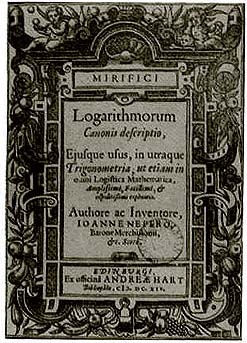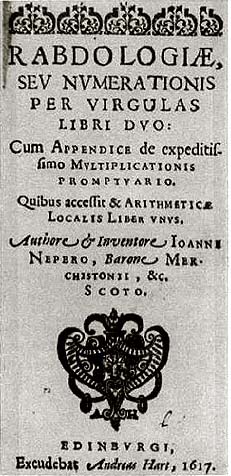1 Background to Napier and his work
For many years, John Napier (1550–1617) spent his leisure time devising means for making arithmetical calculations easier. Just why a Scots laird at the turn of the seventeenth century should have thus devoted the energies left over from the management of his estates remains a puzzle. Up to the publication of his description of logarithms in 1614, three years before his death, Napier was best known to the world for his Protestant religious treatise A plaine discovery of the whole Revelation of Saint John (1594), a well-received work which was translated into several foreign languages. Napier’s interest in mathematics, and in computational methods in particular, seems to have started in his early twenties (in the 1570s), and continued mostly unknown to the wider world until the flurry of publishing activity forty years later which revealed first his table of logarithms (Mirifici logarithmorum canonis descriptio, 1614), then three further computation aids (Rabdologiae, 1617), and after his death an account of how logarithms themselves were calculated (Mirifici logarithmorum canonis constructio, 1619). The titles of his works form a revealing contrast.


Question 1
Compare the titles of Napier’s theological and mathematical writings. Do you notice any difference that may give a clue as to Napier’s intended readership?
Discussion
The mathematical titles are in Latin, that of the theological tract is in English. Assuming the contents are likewise in these two languages (which they are, in fact), we might begin to conjecture from this that Napier had different readers in mind. Given the substantial vernacular textbook tradition by this time (seventy or so years after the first appearance of Record’s works), we may infer that Napier was not aiming at the homegrown practitioner but at a more learned, possibly international, audience.
